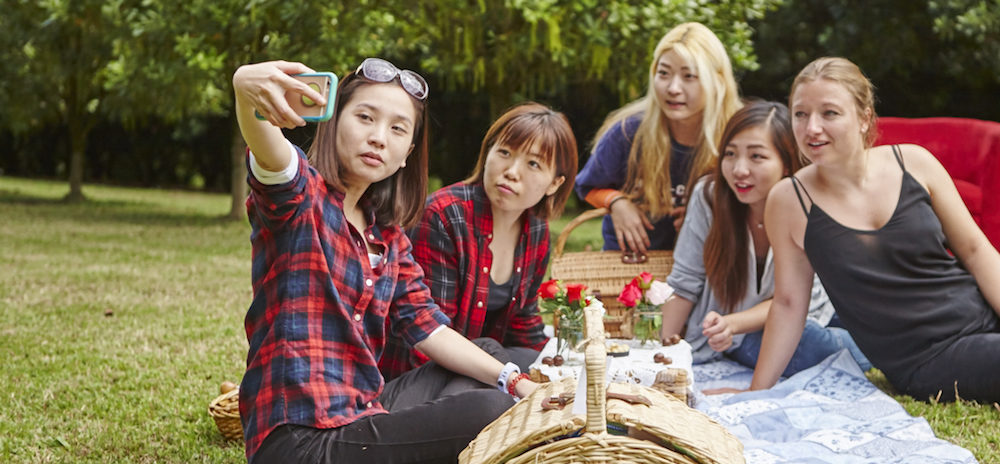
The Australian macadamia industry is on the brink of an exciting transformation underpinned by a solid foundation that will see it able to maximise new opportunities while minimising the impact of any negative external factors that may arise. That was the over-arching message that emerged from the 2016 Australian macadamia industry conference that took place on Queensland’s Sunshine Coast in October.
Bringing together more than 500 delegates comprising growers, processors, marketers, investors, researchers, trading representatives and international industry bodies, the event’s lineup of presenters provided a bounty of expert insights. These came from a variety of internal and external perspectives, which when considered collectively, paint a bright picture of the Australian macadamia industry’s future. Here’s why.
1. Australia is in a sound position
Australian economic commentator and ABC News finance presenter Alan Kohler delivered a powerful keynote presentation delving into the current business environment and what it means for agribusiness, export markets and investment.
Although the world is facing unprecedented times, Kohler believes much of the ‘doom and gloom’ is not necessarily justified, and there is reason to believe that we may be on the brink of some very good times. Key challenges include the US election result, the bond bubble, the level of Chinese debt and the situation in Europe, however the spike that occurred in capital expenditure in the mining sector in 2012/13 is likely to grant Australia immunity from a recession for at least five years.

Australia’s education, tourism, manufacturing and rural exports are performing well. “The gains made in rural exports are playing an important role in underpinning the strength of our overall export economy, and the macadamia industry has contributed to this,” said Kohler. While macadamia prices are currently strong, Kohler advised the Australian industry to maintain a close eye on production and derive more from every hectare as this will ensure the industry’s exporting strength is retained regardless of any future price movements.
2. We’re on the cusp of a transformation
Australian Macadamias CEO Jolyon Burnett highlighted what an exciting time it is to be involved in the Australian macadamia industry. “We’re on the cusp of a transformation from a niche industry to one that has become the largest horticultural export in New South Wales and Queensland, and one that delivers serious return on investment” he said. “We’ve gone from being an industry that’s based around markets in the US and Japan to one that is now exporting to 44 countries, with more to come.”
Global macadamia growth has increased by 50% in the past decade, accompanied by strong price growth. However there is still much to learn and do. Investment in improving efficiency now while funds are available to do it will see the Australian macadamia industry well placed for the future.
Rising global supply will be a big issue to navigate moving forward as the market’s expectations are managed, confidence is instilled and demand is expanded with a message of steady but sustained growth.
By taking a strategic approach and focusing on continual on-farm improvements, scaling the industry, new plantings and grower education the Australian industry will be well placed to tackle the future.

3. We have built a meaningful brand
Steve Cox from Havas Worldwide provided a glimpse into the consumer market of the future. “There is a tsunami of change going on in terms of what consumers are looking for in a brand. They’re looking for brands that can bring deep value and meaning to their everyday lives, far beyond what has existed in the past,” Cox said.
Global events have made today’s world a different place for brands to act and sell in. “Trust has changed, expectations have changed and consumers are more powerful than ever before,” he said.
Cox says a brand must perform well on three criteria in order to be considered meaningful. Firstly there is ‘marketplace’, which relates to product performance (safety, quality, variety etc). This is the realm in which brands have traditionally competed. Then there’s personal wellbeing and collective wellbeing.
Brands that tick the boxes in all three areas become meaningful and more valuable, with every 10% increase in the meaningful brand score increasing a brand’s ability to achieve a premium price without people moving away from the product.

The good news, according to Steve Cox, is that the Australian Macadamias brand measures up strongly against these criteria, and is positioned well for the future.
In terms of marketplace, it delivers on quality, safety, ongoing innovation and industry leadership.
From a personal wellbeing perspective, Australian grown macadamias are a product that help consumers adopt better eating habits, inspire with new ideas, and contribute to happiness. With the current climate of global uncertainty, consumers are seeking small moments of incremental happiness throughout the day, often through social media and snacking.
When it comes to collective wellbeing, Cox says the Australian Macadamias brand is “way ahead.” Continual investment in the future, the industry’s commitment to clean and green production and commitment to the environments and communities in which it operates are very advanced across the board.
At the celebrity chef breakfast the following day, chef Matt Golinski revealed how much he loves the macadamia story and that he shares it with his customers and audience as much as possible. This unscripted moment demonstrated the concept of a meaningful brand perfectly.
4. Our digital marketing strategy aligns with what the new consumer wants
Competing in the online and social media space has never been more important. As Steve Cox highlighted, the future lies in the hands of digital natives and newly emerged markets, and with smart phones never far from the hands of these consumers, social media and mobile are what is driving consumer demand and defining it in new ways.
“People’s lifestyles and values are changing enormously right now,” said Cox. “Technology has made it easy for people to have conversations with brands and each other and to form their opinion of the world from the palm of their hand, 24/7. This is having a profound effect on how brands need to behave in order to be relevant to people.”

With consumers now trusting the opinions of other like-minded people and ratings and reviews more than the claims of brands, government or institutions, it’s important to be playing in the space where consumers are now making most of their decisions – online and on social media. “It’s one of the ways consumers are taking matters into their own hands,” Cox explained.
While technology is important, Cox is quick to point out that it’s just the enabler – it’s actually content that’s driving change. “Content is what forms consumers’ world views, it is what forms cultures and with today’s technology, and in particular the smart phone, people hold in their hands access to more information than any human in history,” he said.
The strength of the Australian Macadamias social media and content marketing program sees our product well placed to compete in this space and adapt to changes as they happen in the future.
5. We’re on track to protect our premium positioning
Steve Cox took us deep into the values and behaviours of the ‘prosumer’. Prosumers are people from 42 markets across all age groups who are early adopters. As people who move ahead of the mainstream, their behaviour is a strong indicator of what consumers are going to do in the future.
The good news is that a natural synergy exists between Australian grown macadamias and many of the behaviours and values of the prosumer:
- They feel it’s important for a brand to be transparent
- They make a point of knowing more about the brands that make the products and services they’re using
- They value quality and reliability as the most important brand values
- They value honesty as a brand value ahead of innovation
- They believe brands have an ethical obligation to be focused on more than just profit and that they should operate in a way that doesn’t harm the environment
- In terms of food, they are more interested in place of origin and nutritional value than brand name
Cox highlighted the emerging trend of ‘mindful consumption.’ People are thinking about the health benefits of what they’re eating. They want food that is produced ‘wisely’ and delivers positive outcomes for themselves and the people around them.
At the same time, consumers are becoming more adventurous with their food choices, and according to Cox, “foodism” has become a lifestyle choice. “People are trying foods they’ve never tried before and discovering new ways of getting nutrition from food,” he said. “That’s important in emerging markets because these represent big markets that have access to a whole lot of new things they’ve never had before – like macadamia nuts. Adventurousness and desire to try something new is going to be driving consumption of a product like macadamias.”
By answering the call of the consumer of the future, the Australian macadamia industry will be well placed to reinforce its premium positioning even further and help to uphold premium pricing even in the face of increased supply.
6. There’s good investment funding available
To drive the growth that will be critical to the future of the Australian macadamia industry, it’s important to build a strong understanding of what drives new agricultural investment in Australia.
David Williams, one of Australia’s foremost agribusiness bankers, explained that while media interest is currently focused on Chinese investment in Australia, it is only part of the story.

“There’s money coming in to this country for agricultural production from everywhere in the world,” he said. “It’s money that wasn’t here five years ago, but it’s also money that may not be available in two years time. There are people from Finland, Greece, Russia, the Philippines, to name just a few, who want to invest here, it’s not just Chinese investors.”
Williams’ overarching message was clear. “If you want foreign capital, do it now, while it’s here,” he said. “The almond industry is taking advantage of it – they’ve planted around 16,500 new acres with 2.2 million trees in the last six months. Lots of funds are active in this space now, and there’s lots of innovative structuring going on.”
He also encouraged the Australian macadamia industry to think big. “If you have any appetite to grow significantly, you will be able to raise the funds. Be ready to do something quantum, because the institutions that are here at the moment looking to invest in Australia want scale.”
7. We’re committed to global collaboration and future planning
It’s no secret that global macadamia production is on the rise, with established growing regions continuing to grow their plantings and emerging regions, particularly China, featuring heavily in production forecasts.
In her presentation on international macadamia production growth, Australian Macadamias Market Development Manager Lynne Ziehlke explained that while established macadamia producing regions currently have some 90,000 hectares under planting, this is expected to grow to around 115,000 hectares by 2022.
Emerging regions across Africa, South America and Asia are forecast to represent around 15,000 hectares by 2022. But it’s China that is the game-changer. “Estimates are that China will have about 200,000 hectares under planting by 2022, but there are some who believe this figure could be as high as 270,000,” Ziehlke said. “So global production is set to move from around 90,000 hectares to about 230,000 hectares, or possibly more, over the next six years.”

While this increased supply represents a challenge, it’s one that the Australian industry has been working on for some time, with significant analysis and industry consultation already conducted. “We’ve been working on the 2022 challenge for the last 18 months because we knew this increased supply was coming,” said Ziehlke. “We’re fostering collaboration with all producing regions to ensure quality production figures and intelligence is being contributed across the board. This will enable us to go to the market with informed forecasts that we can then deliver on and minimise any risk of surprising the market.”
Increased supply will give customers the confidence to invest in Australian product. As Ziehlke explained, “More production will give our customers better surety of supply, and attract larger customers who previously haven’t considered macadamias in product innovation. 61% of our product is consumed as snack and only 35% is consumed as manufactured product like ice cream and cookies, so there’s massive opportunity in that area and growth in production will help us secure more share of that.”
If there’s one thing Ziehlke says is key to tackling this challenge, it’s planning. “We do a lot of planning and we do it well,” she said. “We have time to plan for this so we must take advantage of it and react accordingly.”

8. We invest heavily in research and development
In addition to examining global macadamia production and consumer markets of the future, this year’s conference also examined the orchard of the future, with some of the sharpest minds in the industry sharing their research and forecasts.
Kevin Quinlan, Chris Searle and John Wilkie presented their vision for the macadamia orchard of 2022, and illustrated perfectly the extent to which Australia’s industry is investing in research and development that will lead to higher productivity, improved tree vigour, higher planting densities, and better understanding and management of crop loads.
Developments in knowledge and technology are critical to the Australian macadamia industry’s ability to compete in a global market where competition from low labour cost countries is increasing. The focus needs to be on working smarter and there are some exciting advancements in the pipeline. These include soil mapping to help match irrigation and macadamia varieties to soil types, GPS guided mechanical tractors, sap flow sensors to measure a tree’s water use and guide better water management, yield mapping, and development of a tree health app. It’s anticipated that much of this technology will be standard practice by 2022.
Arguably one of the most exciting areas of development is in the area of robotics. Dr James Underwood from the University of Sydney’s dedicated robotics team gave a fascinating presentation that shared the emerging technology that has already been trialed on several Australian tree crops including almonds, with potential to be applied to macadamias as well.
Dr Underwood explained, “It’s all about getting high-resolution data about every single tree and even every single piece of fruit. We then process that data to deliver useful information to growers to support their decision making processes.”
Underwood and his team have developed a robotic vehicle equipped with an array of cameras and sensors that drives itself up and down orchard rows gathering data. “Using the data we can then create 3D tree maps and pull out other measures such as growth rates, yield maps, flower density, yield differences between tree varieties, per row yields and canopy modeling, all of which can help a grower to get the maximum potential from his or her orchard block,” he said.
The technology also has the capacity to predict fruit quality. “By understanding the specific geometry of each tree we can see how it works to capture the available light, which can help us to predict fruit size and quality,” Underwood said.

Thank you to everyone who contributed to and attended the 2016 Australian macadamia conference. If you would like further information on any of these insights please contact Lynne Ziehlke.


